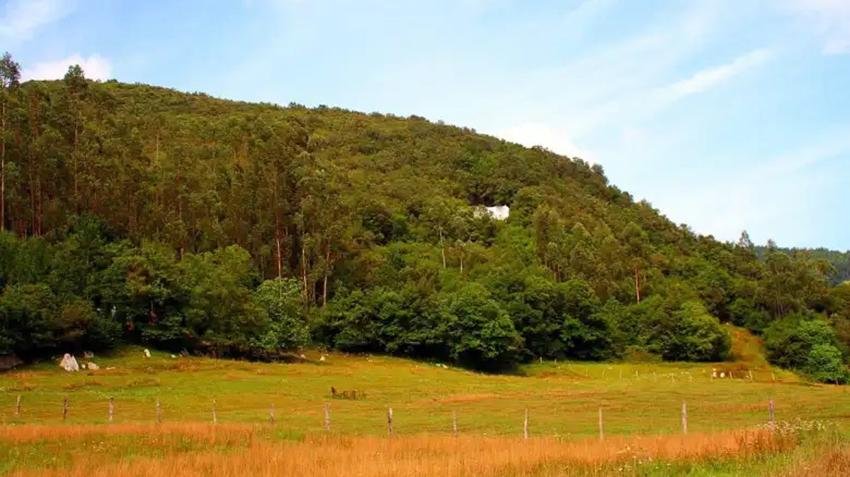Archaeologists from the University of Cantabria, led by Pablo Arias and Roberto Ontañón, have discovered a Paleolithic dwelling in the La Garma cave complex in Cantabria, Spain.
 Remains of the prehistoric dwelling. Credit: University of Cantabria
Remains of the prehistoric dwelling. Credit: University of Cantabria
The recently uncovered dwelling, estimated to be 16,800 years old, is being hailed as “one of the best preserved Paleolithic dwellings in the world.” The cave complex, known for its rich parietal art and paleoanthropological significance, is situated on the southern side of La Garma Hill.
Described as an oval space, the dwelling is defined by an arrangement of stone blocks and stalagmites, supporting a structure of sticks and hides against the cave wall.
Covering an area of approximately 5 square meters, the dwelling centers around a campfire. Artifacts ᴀssociated with Magdalenian hunters and gatherers were found, shedding light on various daily activities, including stone manufacturing, bone and antler tool production, and fur processing.
 Entrance to the cave, protected by a white tarpaulin. Credit: Mario Modesto, Wikimedia Commons
Entrance to the cave, protected by a white tarpaulin. Credit: Mario Modesto, Wikimedia Commons
Over 4,614 objects have been meticulously documented, ranging from bones of deer, horse, and bison to 600 pieces of flint, needles, a protoharpoon, and marine mollusk shells. Notably, the researchers discovered decorated bones, including a pierced aurochs phalanx featuring engravings of both the animal and a human face—an exceptional artifact unique to the European Paleolithic era.
Due to the national importance of the find, the research team utilized innovative non-intrusive techniques in their study, including continuous tomography of soils, 3D cartography, molecular and genetic analysis of soils and Paleolithic objects, mᴀss spectrometry, and hyperspectral imaging.
The significant discovery was made possible through the support of the PALARQ Foundation and the International Insтιтute of Prehistoric Research of Cantabria.
La Garma, already renowned for its UNESCO-listed cave art and extensive cultural sequences, continues to be a crucial site for understanding prehistoric societies. With its comprehensive sequence spanning from the Lower Paleolithic to the Middle Magdalenian occupations, La Garma stands as a unique archaeological site offering unparalleled possibilities for studying the dwellings and ritual spaces of the hunters of the last ice age.





